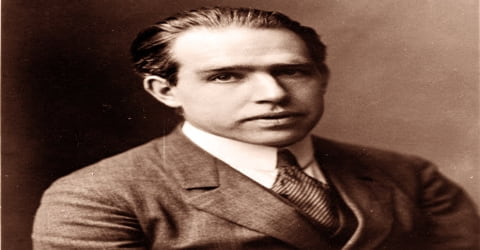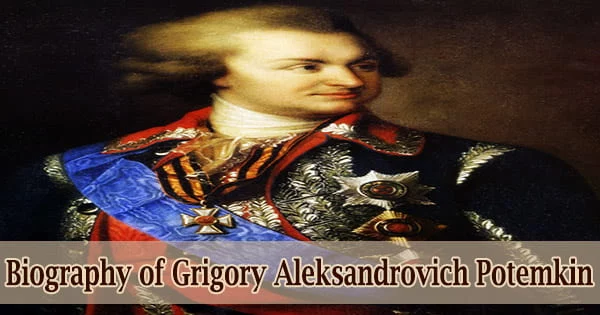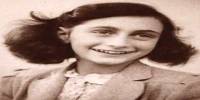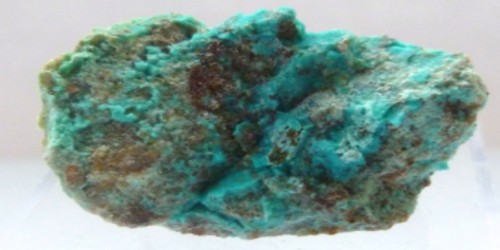Biography of Niels Bohr
Niels Bohr – Danish physicist.
Name: Niels Henrik David Bohr
Date of Birth: 7 October 1885
Place of Birth: Copenhagen, Denmark
Date of Death: 18 November 1962 (aged 77)
Place of Death: Copenhagen, Denmark
Father: Christian Bohr
Mother: Ellen Adler Bohr
Siblings: Harald Bohr, Jennifer Bohr
Spouse/Ex-: Margrethe Nørlund (m. 1912)
Children: Aage Bohr, Erik Bohr, Ernest Bohr, Hans Henrik Bohr
Fields: Theoretical physics
Early Life
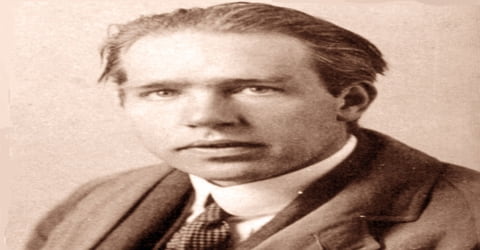
Niels Henrik David Bohr was a Danish physicist who made foundational contributions to understanding the atomic structure and quantum theory, for which he received the Nobel Prize in Physics in 1922. Bohr was also a philosopher and a promoter of scientific research.
He was born in Copenhagen, Denmark, on 7 October 1885, the second of three children of Christian Bohr, a professor of physiology at the University of Copenhagen, and Ellen Adler Bohr, who came from a wealthy Danish Jewish family prominent in banking and parliamentary circles. He received his early education from the Gammelholm Latin School which he joined when he was seven. From 1903 he attended the Copenhagen University where his major was physics, which he studied under Professor Christian Christiansen.
In 1909, he earned a master’s degree in physics and went on to complete his PhD in physics in 1911, both from the University of Copenhagen. His doctoral dissertation was on the electron theory of metals.
After earning his doctoral degree in physics, he conducted an intensive research along with Ernest Rutherford on the atomic structures. He formulated the first successful explanation of some major lines of the hydrogen spectrum and his theory of the atom became the foundation of modern atomic physics.
Bohr developed the Bohr model of the atom, in which he proposed that energy levels of electrons are discrete and that the electrons revolve in stable orbits around the atomic nucleus but can jump from one energy level (or orbit) to another. Although the Bohr model has been supplanted by other models, its underlying principles remain valid. He conceived the principle of complementarity: that items could be separately analyzed in terms of contradictory properties, like behaving as a wave or a stream of particles. The notion of complementarity dominated Bohr’s thinking in both science and philosophy.
Among other things, he also proposed the complementarity principle, which states that objects may have a dual nature, similar to that of an electron which behaves both as a particle and a wave, but we can only experience one aspect at a time. During World War II, he escaped arrest by German police and eventually made it to the United States where he acted as a prominent part of the team of physicists working on the Manhattan Project. He was also a noted humanitarian and after the war, he spent the rest of his life advocating the peaceful use of nuclear energy.
After the war, Bohr called for international cooperation on nuclear energy. He was involved with the establishment of CERN and the Research Establishment Risø of the Danish Atomic Energy Commission and became the first chairman of the Nordic Institute for Theoretical Physics in 1957.
Niels Bohr completely transformed our view of the atom and of the world. Realizing that classical physics fails catastrophically when things are atom-sized or smaller, he remodeled the atom so electrons occupied ‘allowed’ orbits around the nucleus while all other orbits were forbidden. In doing so he founded quantum mechanics.
Later, as a leading architect of the Copenhagen interpretation of quantum mechanics, he helped to reshape our understanding of how nature operates at the atomic scale.
Childhood, Family and Educational Life
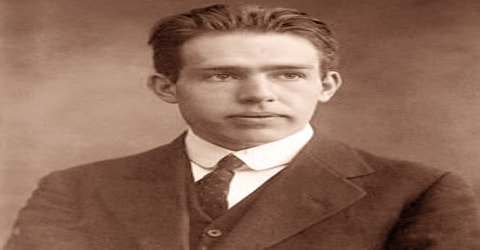
Niels Bohr was born on October 7, 1885, in Copenhagen, Denmark, to Christian Bohr, a physiology professor, and his wife, Ellen Adler Bohr, daughter of a wealthy Danish Jewish family. He had an elder sister, Jenny, and a younger brother, Harald. His father had been raised in a Lutheran family and his mother in a Jewish family. Niels was baptized as a Lutheran at the age of six to please one of his grandmothers. Neither his father nor his mother practiced their religions.
He had an elder sister, Jenny, and a younger brother Harald. Jenny became a teacher, while Harald became a mathematician and Olympic footballer who played for the Danish national team at the 1908 Summer Olympics in London. Bohr was a passionate footballer as well, and the two brothers played several matches for the Copenhagen-based Akademisk Boldklub (Academic Football Club), with Bohr as a goalkeeper.
In 1903, when he was 18 years old, Neils Bohr enrolled as an undergraduate student at the University of Copenhagen, majoring in physics. Two years later, his brother Harald joined him. The two Bohr brothers were always very close and both became influential professors at the University of Copenhagen; Neils in the field of physics and Harald in mathematics. In 1911, Bohr completed his education at the University of Copenhagen when he was awarded a Doctor of Philosophy (Ph.D.) in physics for his work on the behavior of electrons in a metal.
After completing his Ph.D., Bohr taught for several years at Victoria University, but in 1916, he returned to the University of Copenhagen and it wouldn’t be long before he made some major contributions to our understanding of the atom.
Bohr subsequently elaborated his master’s thesis into his much-larger Doctor of Philosophy (dr. Phil.) thesis. Bohr’s thesis was groundbreaking but attracted little interest outside Scandinavia because it was written in Danish, a Copenhagen University requirement at the time. In 1921, the Dutch physicist Hendrika Johanna van Leeuwen would independently derive a theorem from Bohr’s thesis that is today known as the Bohr–van Leeuwen theorem.
Personal Life

In 1910, Bohr met Margrethe Nørlund, the sister of the mathematician Niels Erik Nørlund. On August 1, 1912, he married Margrethe Nørlund. The couple was blessed with six sons, of which two died in unfortunate circumstances. Aage Bohr became a successful physicist, and in 1975 was awarded the Nobel Prize in physics, like his father. Hans Bohr became a physician; Erik Bohr, a chemical engineer; and Ernest, a lawyer. Like his uncle Harald, Ernest Bohr became an Olympic athlete, playing field hockey for Denmark at the 1948 Summer Olympics in London.
Career and Works
In 1911, he traveled to England and met J. J. Thompson of the Cavendish Laboratory at the Cambridge University. He conducted some research on cathode rays but failed to impress Thomson. Later, Ernest Rutherford invited him to conduct post-doctoral research in England on the atomic structures.

In science, a scientific model is an idea about how nature works that can be tested and used to explain many observed phenomena. Bohr studied the models of the atom that were already used by scientists and improved on them with a new model that better explained how atoms actually worked. His new model was named after him and is called the Bohr model of the atom. In the Bohr model, positively charged protons and neutral neutrons are tightly held in the nucleus, or center, of the atom. Negatively charged electrons move around the nucleus in defined orbits.
Bohr returned to Denmark in July 1912 for his wedding and traveled around England and Scotland on his honeymoon. On his return, he became a privatdocent at the University of Copenhagen, giving lectures on thermodynamics. Martin Knudsen put Bohr’s name forward for a docent, which was approved in July 1913, and Bohr then began teaching medical students. His three papers, which later became famous as “the trilogy”, were published in Philosophical Magazine in July, September, and November of that year. He adapted Rutherford’s nuclear structure to Max Planck’s quantum theory and so created his Bohr model of the atom.
According to the Bohr model, electrons orbit the nucleus in defined locations, called shells. Some electron shells require the electrons to have more energy than others, so if an electron absorbs some energy, it can move into a higher energy shell. If it moves the other way, from a high energy orbit to a low energy orbit, it will emit a small packet of energy called a quantum.
By the end of 1911, Bohr had met another great physicist, Ernest Rutherford, whose laboratory was at the University of Manchester. Rutherford had won the 1908 Chemistry Nobel Prize for his work in radioactivity. In 1909 he had discovered the atomic nucleus. However, despite Rutherford’s high reputation, his claim that the atom was made of a tiny, very dense, positively charged nucleus surrounded by negatively charged electrons had met with a lukewarm response from other physicists.
Bohr became increasingly interested in Rutherford’s model of the atom, particularly the behavior of its electrons, the subject of his Ph.D. thesis. He and Rutherford became the greatest of friends and in years to come they and their wives would spend happy vacations together.
In 1913, Bohr’s paper on the atomic structure was published which became the basis of the famous ‘old quantum theory’.
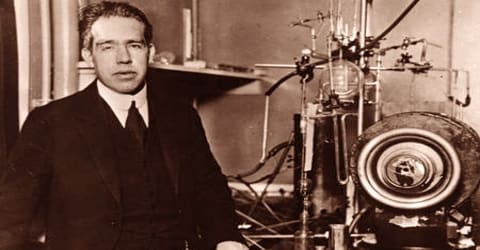
From 1914 to 1916, he worked as a lecturer of physics at the Victoria University of Manchester, UK. In April 1917, Bohr began a campaign to establish an Institute of Theoretical Physics. He gained the support of the Danish government and the Carlsberg Foundation, and sizeable contributions were also made by industry and private donors, many of them Jewish. Legislation establishing the Institute was passed in November 1918. Now known as the Niels Bohr Institute, it opened on 3 March 1921, with Bohr as its director. His family moved into an apartment on the first floor. Bohr’s institute served as a focal point for researchers into quantum mechanics and related subjects in the 1920s and 1930s when most of the world’s best known theoretical physicists spent some time in his company. Early arrivals included Hans Kramers from the Netherlands, Oskar Klein from Sweden, George de Hevesy from Hungary, Wojciech Rubinowicz from Poland and Svein Rosseland from Norway. Bohr became widely appreciated as their congenial host and eminent colleague. Klein and Rosseland produced the Institute’s first publication even before it opened.
In 1916, he became a professor of theoretical physics at the University of Copenhagen, a post he held for 46 years. He founded the ‘Institute of Theoretical Physics’ at the Copenhagen University in 1920 and also served as its administrator until 1962.
During World War II, he fled from Denmark to America, where he worked on the Manhattan Project. After the war, he became an outspoken activist against nuclear weapons and for the peaceful use of atomic energy.
In 1922, Bohr was awarded the Nobel Prize in Physics “for his services in the investigation of the structure of atoms and of the radiation emanating from them”. The award thus recognized both the Trilogy and his early leading work in the emerging field of quantum mechanics. For his Nobel lecture, Bohr gave his audience a comprehensive survey of what was then known about the structure of the atom, including the correspondence principle, which he had formulated. This states that the behavior of systems described by quantum theory reproduces classical physics in the limit of large quantum numbers.
In 1924, Bohr, Kramers and John C. Slater, an American physicist working at the Institute in Copenhagen, proposed the Bohr–Kramers–Slater theory (BKS). It was more a programme than a full physical theory, as the ideas it developed were not worked out quantitatively. BKS theory became the final attempt at understanding the interaction of matter and electromagnetic radiation on the basis of the old quantum theory, in which quantum phenomena were treated by imposing quantum restrictions on a classical wave description of the electromagnetic field.
From 1938 until his death, he was the president of the Royal Danish Academy of Sciences and supervised the first phase of the Commission’s program for the peaceful uses of atomic energy. In 1954 he was quite influential in the establishment of the European Organization for Nuclear Research (CERN). He was also involved with the founding of the Research Establishment Risø of the Danish Atomic Energy Commission and served as its first chairman from February 1956.

He is also known for conceiving ‘the complementarity principle’ which defined that wave and particle aspects of nature are complementary, and can never be experienced simultaneously. The principle states that items could be separately analyzed in terms of contradictory properties, like behaving as a wave or a stream of particles.
He spent many years studying the atomic nucleus and how it could be fissioned to release energy. His research was used in the development of atomic weapons and nuclear energy, and he spent much of his later life working to promote the peaceful development of nuclear energy and addressing problems that arose from the development of atomic weapons during World War II. In recognition of his efforts for the responsible use of atomic energy, in 1957, Niels Bohr was awarded the Atoms for Peace Award.
Awards and Honor
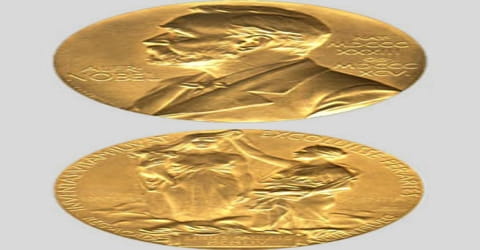
In 1922, Niels Bohr was awarded the Nobel Prize in physics for his work to advance our understanding of atomic structure.
In 1921, he received the prestigious ‘Hughes Medal’ from the Royal Society of London.
In 1923, he was conferred the ‘Matteucci Medal’ by the ‘Italian Society of Sciences’.
In 1926, he was presented the ‘Franklin Medal’ by the Franklin Institute of Philadelphia.
In 1930, he has conferred the distinguished ‘Max Planck Medal’ for his extraordinary achievements in theoretical physics.
In 1938, he received the ‘Copley Medal’ from the Royal Society of London in recognition of his distinguished work in the “development of the quantum theory of atomic structure”.
In 1957, he was awarded the ‘United States Atoms for Peace Award’. The same year, he also received the ‘Sonning Prize’ from the University of Copenhagen.
Death and Legacy

Niels Bohr died aged 77 of sudden heart failure in his home in Copenhagen on November 18, 1962. He was cremated, and his ashes were buried in the family plot in the Assistens Cemetery in the Nørrebro section of Copenhagen, along with those of his parents, his brother Harald, and his son Christian. Years later, his wife’s ashes were also interred there. Margrethe’s ashes were also buried there when she died.
On 7 October 1965, on what would have been his 80th birthday, the Institute for Theoretical Physics at the University of Copenhagen was officially renamed to what it had been called unofficially for many years: the Niels Bohr Institute.
Information Source:
